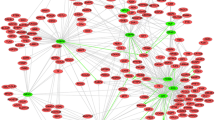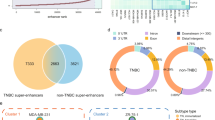Abstract
Detection of gene regulatory elements and the interactions among them may be conducive to diagnosis and treatment of many diseases and maladies as cancer. In this regards, Hi-C techniques such as HiCUP, HiC-Pro, HiC-bench, etc., are capable of detecting the gene regulatory elements and their interactions. Extracting only the fixed length gene regulatory elements, these techniques are not able to detect many of gene regulatory elements as they may be of variable-lengths. In this research, we intend to use a two-objective Meta heuristic method based on simulation annealing to provide a method capable of detecting and extracting sequences of variable-length regulators from the genome, and also calculating the interactions between them. In fact, these gene regulatory elements can be potential promoters/enhancers that could play a significant role in the incidence and exacerbation of cancer. To measure the performance and effectiveness of the suggested method, the proposed method is implemented on Hi-C data regarding patients with breast cancer in two blood cells GM12878 and CD34+. Then, the results of implementing the proposed method are compared with the HiCUP and HiC-Pro methods. The results show that the proposed method has a better performance than the HiCUP and HiC-Pro methods. In addition, the proposed method has been investigated for the detection and extraction of gene regulatory elements involved in the occurrence and exacerbation of this type of cancer. Experimental studies have shown that the two promoters BLC6 and HOTTIP discovered by the proposed method have had a significant effect on the incidence and severity of breast cancer in the both genetically engineered blood cells GM12878 and CD34+.








Similar content being viewed by others
REFERENCES
Shen, Y., Wang, D., Zhao, J., et al., Fish red blood cells express immune genes and responses, Aquacult. Fish., 2018, vol.3, no. 1, pp. 14—21.
Xie, S., Niu, D., Wei, K., et al., Polymorphisms in the FOXO gene are associated with growth traits in the Sanmen breeding population of the razor clam Sinonovacula constricta, Aquacult. Fish., 2018, vol. 3, no. 5, pp. 177—183.
Chou, A., Lee, T., Shao, Y., and Fei Chen, I., Mining the breast cancer pattern using artificial neural network and multivariate adaptive regression splines, Expert Syst. Appl., 2004, pp. 42—133.
Jemal, A., Bray, F., Center, M., et al., Global cancer statistics, Ca-Cancer J. Clin., 2011, pp. 69—90.
D Imakaev, M., Fudenberg, G., McCord, R.P., et al., Iterative correction of Hi-C data reveals hallmarks of chromosome organization, Nat. Meth., 2012, pp. 999–1003.
Hwang, Y.C., Zheng, Q., Gregory, B.D., et al., High-throughput identification of long-range gene regulatory elements and their target promoters in the human genome, Nucleic Acids Res., 2013, vol. 41, pp. 4835–4846.
Robinson, J.T., Turner, D., Durand, N.C., et al., Juicebox.js provides a cloud based visualization system for Hi-C data, Cell Syst., 2018, vol. 6, pp. 256—258.
Delen, D., Walker, G., and Kadam, A., Predicting breast cancer survivability: a comparison of three data mining methods, J. Artif. Intell. Med., 2010, pp. 27—113.
Chepelev, I., We, G., Wangsa, D., et al., Characterization of genome-wide enhancer—promoter interactions reveals co-expression of interacting genes and modes of higher order chromatin organization, Cell Res., 2012, pp. 490–503.
Jin, F., Li, Y., Dixon, J.R., et al., A high-resolution map of the three-dimensional chromatin interactome in human cells, Nat. Lett., 2013, pp. 290—294.
Alexandrov, L.B., Nik-Zainal, S., Wedge, D.C., et al., Signatures of mutational processes in human cancer, Nature, 2013, pp. 415—421.
Cabreros, I., Abbe, E., and Tsirig, A., Detecting community structures in Hi-C genomic data, Cornell Library University, arXiv:1509.05121 [q-bio.GN], 2015, pp. 1—17.
Mifsud, B., Tavares-Cadete, F., Young, A.N., et al., Mapping long-range promoter contacts in human cells with high-resolution capture Hi-C, Nat. Genet., 2015, vol. 47, pp.598—606.
Servant, N., Varoquaux, N., Lajoie, B.R., et al., HiC-Pro: an optimized and flexible pipeline for Hi-C data processing, Genome Biol., 2015. https://doi.org/10.1186/s13059-015-0831-x
Charalampos, L., Stephen, K., Panagiotis, N., et al., HiC-bench: comprehensive and reproducible Hi-C data analysis designed for parameter exploration and benchmarking, BMC Genomics, 2017, pp. 18—22.
Manosij, G., Sukdev, A., Kushal, K., et al., Genetic algorithm based cancerous gene identification from microarray data using ensemble of filter methods, Med. Biol. Eng. Comput., 2018. https://doi.org/10.1007/s11517-018-1874-4
Cremaschi, P., Roberta, C., Stefania, A., et al., An association rule mining approach to discover lncRNAs expression patterns in cancer datasets, BioMed Res. Int., 2015, pp. 1—13.
Zhou, J. and Troyanskaya, O.G., Predicting effects of noncoding variants with deep learning–based sequence model, Nat. Methods, 2015, pp. 931—934.
Liu, F., Li, H., Ren, C., et al., PEDLA: predicting enhancers with a deep learning-based methodic framework, Nature, 2016, pp. 1—14.
Wingett, S., Ewels, P., Furlan-Magaril, M., et al., HiCUP: pipeline for mapping and processing Hi-C data, F1000Res, 2015. https://doi.org/10.12688/f1000research.7334.1
Riccardo, C., Qiuyang, W., Jihong, G., and Sheng, Z., GITAR: an open source tool for analysis and visualization of Hi-C data, Genomics, Proteomics Bioinf., 2018, https://doi.org/10.1016/j.gpb.2018.06.006.
Sung, W., Learning chromatin interaction using Hi-C datasets, Encyclopedia of Bioinformatics and Computational Biology, Ranganathan, S., Nakai, K., and Schönbach, C., Elsevier, 2019, vol. 2, pp. 318—323.
Dai, Z., Si, C., Zhai, D., et al., Genetic effects of historical anthropogenic disturbance on a long-lived endangered tropical tree Vatica mangachapoi, J. For. Res., 2018, vol. 29, no. 2, pp. 291—299.
Author information
Authors and Affiliations
Corresponding author
Ethics declarations
COMPLIANCE WITH ETHICAL STANDARDS
The authors declare that they have no conflict of interest. This article does not contain any studies involving animals or human participants performed by any of the authors.
ADDITIONAL INFORMATION
The paper is extracted from a PhD thesis compiled by student Mohammadjavad Hosseinpoor and supervised by Hamid Parvin and Samad Nejatian.
Rights and permissions
About this article
Cite this article
Hosseinpoor, M.J., Parvin, H., Nejatian, S. et al. Gene Regulatory Elements Extraction in Breast Cancer by Hi-C Data Using a Meta-Heuristic Method. Russ J Genet 55, 1152–1164 (2019). https://doi.org/10.1134/S1022795419090072
Received:
Revised:
Accepted:
Published:
Issue Date:
DOI: https://doi.org/10.1134/S1022795419090072




